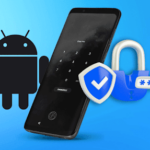![]()
The most responsive: Google Keyboard
Google Keyboard is currently my choice for a keyboard on Android. I know, that sounds dull and limited, but it works, and it does so better than any other keyboard I have tried. I was a Swiftkey user for 2 years before Google released their own Keyboard, I decided to give it a try, thinking I would be back on Swiftkey in a few hours, but I found it to be fast and accurate. When I switched back to Swiftkey, I noticed a small lag in input compared to Google Keyboard. I asked around and it wasn’t just my opinion, so I decided to stick with Google. Google Keyboard has good corrections, a gesture input method à la Swype, Emojis, great spacing between different keys, and supports a lot of languages. I also use this tip, to type with autocorrect on and off, without ever switching or toggling anything.


Google Keyboard is minimal yet very efficient
Download: Google Keyboard
The best predictions: Swiftkey
Swiftkey is the most popular third-party keyboard on Android, and for good reason. Its predictions are excellent and it even manages to learn your habits and predict your next word before you even write it. Swiftkey’s predictions are based on what you teach it (it can learn from your contact list, Gmail, Twitter, Facebook) and what is popular on the internet, making its dictionary always accurate and up-to-date. Swiftkey can also have 3 languages enabled simultaneously, allowing you to switch between them seamlessly. Its Cloud feature syncs your personal dictionary and typing insights across devices. It supports themes, and has multiple layouts for phones, tablets, and phablets. It also supports swiping for an excellent all-around experience.


Swiftkey’s predictions are very accurate
Download: Swiftkey Keyboard Free (trial)
The smallest: Minuum
Minuum launched as an Indiegogo campaign, and its promise was a one-ligne keyboard that doesn’t obscure your screen. It delivered on its promise, with a keyboard that looks hard to master but is actually quite intuitive once you stop consciously thinking about it. Minuum has evolved a lot since its first release, including a full regular keyboard and multiple panes for emojis, cursor controls, clipboard tools, and dictionary and thesaurus. Download: Minuum Keyboard Free (trial)
The free and powerful: TouchPal X
TouchPal X borrows a lot of the popular features of many other keyboards and incorporates them into one free and ad-free app. TouchPal offers themes, layouts, swipe input, cloud sync, contextual predictions, and word trends like Swiftkey. It also adds emojis, and gestures to input numbers and special characters. There’s a Store where you can purchase additional themes and specific dictionaries, but for most users the free version of TouchPal will be more than enough. Download: TouchPal X Keyboard
The invisible: Fleksy
With almost the opposite approach of TouchPal X — which crams as many UI elements as possible — Fleksy focuses on a simple interface devoid of any unnecessary clutter. Fleksy’s corrections are accurate and aided by learning your style from email and social accounts. Its first unique feature is the use of gestures to insert a space, erase the last word, and cycle through predictions. Its other weird yet very awesome killer feature is the invisible keyboard, a transparent layer on top of the screen with no visible buttons. If you’ve memorized the QWERTY keyboard layout, you can type as accurately on it than with a regular keyboard, except that you can see the whole screen at the same time.


Fleksy reduces UI clutter and focuses on gestures
Download: Fleksy Keyboard Free (trial) What is your favorite keyboard on Android? Are you as convinced by Google Keyboard as I am, or do you prefer Swiftkey or another alternative?

















